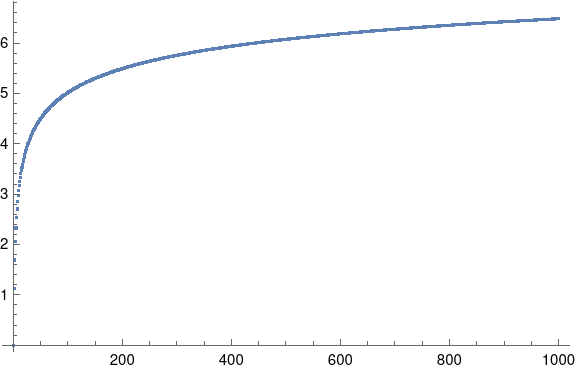Order statistics for normal distributions
The last couple posts have touched on order statistics for normal random variables. I wrote the posts quickly and didn't go into much detail, and more detail would be useful.
Given two integers n >= r >= 1, define E(r, n) to be the rth order statistic of n samples from standard normal random variables. That is, if we were to take n samples and then sort them in increasing order, the expected value of the rth sample is E(r, n).
We can compute E(r, n) exactly by
where and are the PDF and CDF of a standard normal random variable respectively. We can numerically evaluate E(r, n) by numerically evaluating its defining integral.
The previous posts have used
dn = E(n, n) - E(1, n) = 2 E(n, n).
The second equality above follows by symmetry.
We can compute dn in Mathematica as follows.
Phi[x_] := (1 + Erf[x/Sqrt[2]])/2 phi[x_] := Exp[-x^2/2]/Sqrt[2 Pi] d[n_] := 2 n NIntegrate[ x Phi[x]^(n - 1) phi[x], {x, -Infinity, Infinity}]And we can reproduce the table here by
Table[1/d[n], {n, 2, 10}]Finally, we can see how dn behaves for large n by calling
ListPlot[Table[d[n], {n, 1, 1000}]]to produce the following graph.

See the next post for approximations to dn.
The post Order statistics for normal distributions first appeared on John D. Cook.